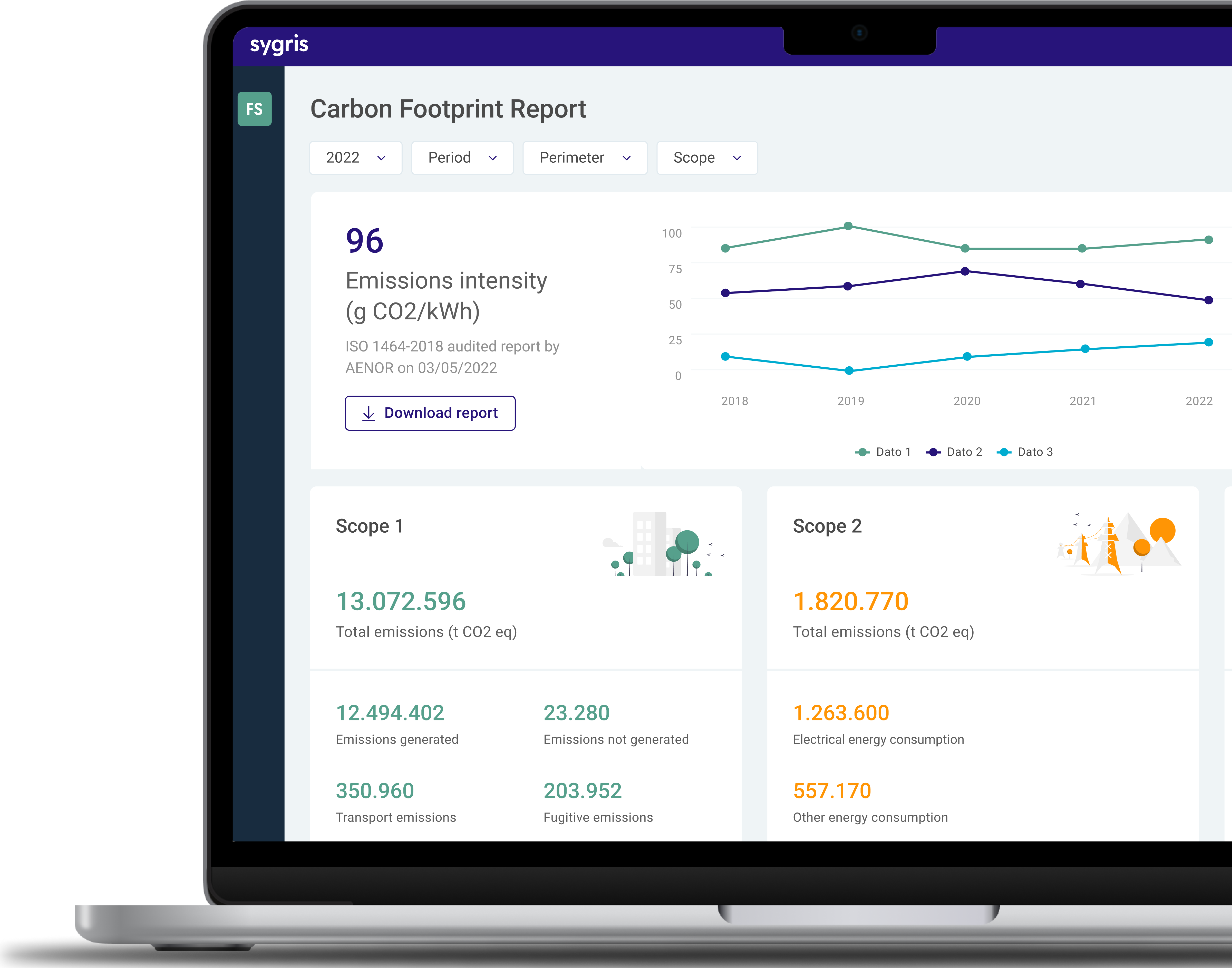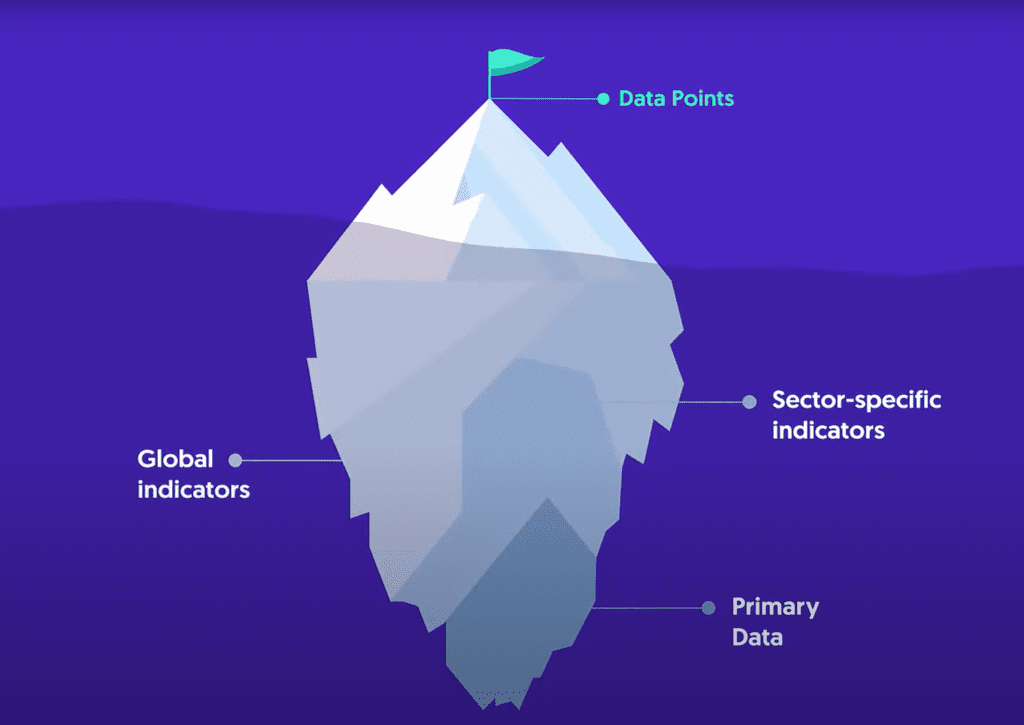In recent years, corporate reporting and ESG regulations have been widely discussed, but… do you know the rules that shape how we measure greenhouse gas (GHG) emissions? Because you can’t reduce what you don’t measure properly. Accurately calculating your carbon footprint isn’t just about ticking a compliance box, it’s a strategic tool to optimise operations, cut costs, and, most importantly, avoid hefty fines. Against this backdrop, the European Union has introduced a complex regulatory framework that businesses need to understand. But don’t worry—at Sygris, we break it down without the jargon.
The european regulatory framework for ghg emissions
One of the most significant regulations in this area is the European Climate Law, outlined in Regulation (EU) 2021/1119. This law enshrines the EU’s commitment to climate neutrality by 2050 and sets an interim target of a 55% reduction in GHG emissions by 2030 (compared to 1990 levels). Every business operating in Europe—directly or indirectly—will be affected by national policies designed to meet these targets. The key takeaway? This law makes climate neutrality a legal requirement, aligning the EU with the Paris Agreement and ensuring that climate policies are legally binding.
A more recent but equally significant regulation is Regulation (EU) 2024/3012, approved in November 2024, which introduces an EU-wide certification framework for permanent carbon removals, carbon farming, and carbon storage in products. This regulation ensures that carbon removals are verifiable and traceable, significantly improving the environmental integrity of carbon offset markets. It will have a major impact on carbon capture and storage (CCS) projects and industries such as energy and agriculture that seek to offset their emissions. The first certificates are expected to be issued in 2025, creating new opportunities and challenges for businesses aiming to lead in emissions reduction.
Another cornerstone of EU climate policy is the EU Emissions Trading System (EU ETS), governed by Directive 2003/87/EC. This is the world’s largest carbon market, requiring businesses to monitor, report, and verify their GHG emissions annually. Companies exceeding their allocated emissions allowances must purchase additional credits to compensate. From 2026, the EU ETS will expand to include maritime transport and other sectors, reinforcing its role as a large-scale emissions control tool. Since its launch in 2005, the EU ETS has helped cut emissions by 43% in the sectors it covers.
Equally crucial is Regulation (EU) 2018/842, known as the Effort Sharing Regulation (ESR). Unlike the carbon market-based EU ETS, this regulation focuses on sectors not covered by the ETS, such as transport, buildings, agriculture, and waste management. Here, national emissions reduction targets are set, requiring each EU country to develop tailored strategies based on their economic profile. Businesses operating in these sectors should prepare for stricter regulations in the coming years, as emissions targets will be reviewed every five years with an aim to achieve a 30% reduction by 2030.
How these regulations impact business strategy
When it comes to land use and forestry management, Regulation (EU) 2018/841 introduces obligations for EU countries to balance emissions from land use, land-use change, and forestry (LULUCF). Essentially, emissions from deforestation must be offset by equivalent carbon removals. This regulation heavily impacts sectors such as forestry, agriculture, and land management, which must comply with the requirement to achieve carbon neutrality by 2030.
Regulation (EU) 2023/857 builds on existing legislation by strengthening the alignment between emissions reduction targets and climate neutrality goals. This effectively tightens national commitments, ensuring that every EU country contributes fairly and consistently to the fight against climate change.
Another key regulation concerns fluorinated greenhouse gases (F-gases), covered by Regulation (EU) 2024/573. These gases, widely used in refrigeration, air conditioning, and electronics, are highly polluting. Since 2015, the EU has already reduced hydrofluorocarbon (HFC) use by 37%, and this new regulation will further restrict their use in the coming years, pushing businesses towards more sustainable alternatives.
Finally, while the Corporate Sustainability Reporting Directive (CSRD) doesn’t specifically regulate GHG measurement, it imposes strict carbon footprint disclosure requirements. Under this directive, large companies must report their emissions in line with the European Sustainability Reporting Standards (ESRS), meaning many organisations will need to upgrade their data monitoring and reporting systems. The directive applies to large companies from 2024 and will extend to listed SMEs from 2026, driving greater transparency in climate impact reporting.
Understanding and adapting to these regulations isn’t just about legal compliance, it’s a competitive advantage. Businesses that stay ahead of the curve and implement strong emissions management systems don’t just avoid fines, they also optimise processes, cut costs, and enhance their brand reputation. The key is to measure accurately, act smartly, and embrace sustainability as an opportunity rather than a burden. Because one thing is certain: the future of business is green. Whether you like it or not.





